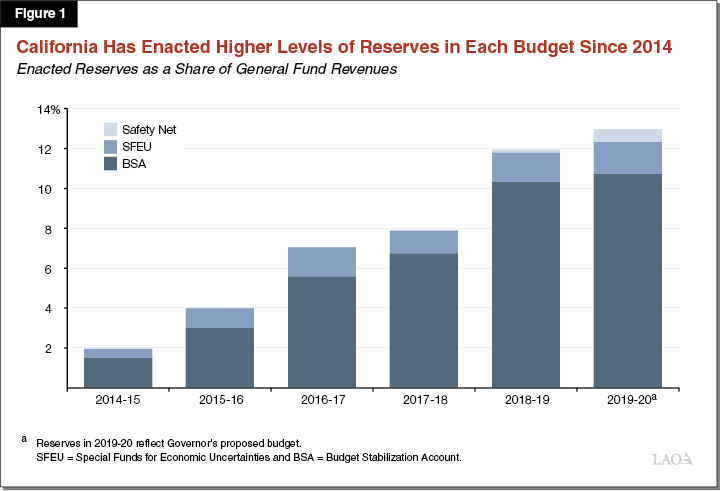Trump's Trade Policies And California's Budget: A $16 Billion Deficit

Table of Contents
The Impact of Tariffs on California's Agricultural Sector
Trump's administration imposed significant tariffs on various goods, triggering retaliatory tariffs from other countries. This "trade war" severely impacted California's robust agricultural sector, a cornerstone of the state's economy. California's agricultural exports, including almonds, wine, and dairy products, faced significant challenges in international markets.
- Almonds: Retaliatory tariffs imposed by China, a major importer of California almonds, led to substantial export losses for California almond growers, directly impacting their income and contributing to the state's overall economic downturn. These losses translated into reduced tax revenue for the state.
- Wine: European Union tariffs on California wines reduced export volumes and profitability, forcing wineries to cut back on production and potentially lay off workers, further straining the state's economy. The impact was felt across the entire supply chain, from grape growers to distributors.
- Dairy: Similar challenges were faced by California's dairy industry, which saw decreased demand for its products in key export markets due to tariffs and trade restrictions. This led to lower milk prices and financial hardship for dairy farmers.
The combined impact of these agricultural tariffs resulted in significant losses for California farmers and businesses, contributing substantially to the state's growing budget deficit. The disruption of established international trade agreements further exacerbated the situation.
Disruptions to Supply Chains and Manufacturing in California
Trump's trade policies, particularly the trade war with China, significantly disrupted California's supply chains and manufacturing sector. The imposition of tariffs increased the cost of imported goods, impacting businesses across various sectors.
- Increased Import Costs: Higher tariffs on imported materials and components led to increased production costs for California manufacturers, reducing their competitiveness and profitability. This forced many to absorb the costs, impacting their bottom line and potentially leading to job losses.
- Manufacturing Job Losses: The uncertainty created by the trade war prompted some manufacturers to relocate their facilities outside of California to avoid the increased tariffs and logistical complexities, resulting in job losses and a decrease in tax revenue for the state.
- Supply Chain Bottlenecks: The trade war created significant disruptions in global supply chains, leading to delays and shortages of essential materials for California businesses. This impacted production schedules, increased costs, and further hampered economic growth.
These disruptions in California's manufacturing sector and supply chains significantly contributed to the state's economic woes and the ballooning budget deficit.
The Role of Immigration Policies on California's Workforce and Economy
Trump's restrictive immigration policies also played a role in California's economic challenges. These policies created potential labor shortages, particularly in sectors heavily reliant on immigrant workers, such as agriculture.
- Labor Shortages: Reduced immigration led to labor shortages in crucial sectors like agriculture, impacting harvests and potentially increasing food prices. This shortage also hindered the growth of other industries dependent on a robust workforce.
- Economic Consequences: The reduced flow of immigrants into California negatively affected the state's GDP growth by limiting the available workforce and reducing consumer spending. This further contributed to the state's economic downturn and budget deficit.
- Tax Revenue Impact: Fewer immigrants meant a reduction in the state's tax revenue, exacerbating the budget shortfall. The decline in economic activity directly translates into lower tax collections.
The complex interplay between immigration and the economy played a significant role in the financial strain faced by California.
State Budgetary Responses to the Economic Downturn
Facing the economic fallout from Trump's trade policies, California's state government responded with a series of budget cuts and austerity measures.
- Budget Cuts: Significant cuts were implemented across various state programs and services to address the growing deficit. This resulted in reduced funding for education, healthcare, and infrastructure projects.
- Political Ramifications: The budget deficit led to intense political debates and disagreements over how to address the crisis, further complicating the situation and hindering effective solutions.
- Economic Recovery Plans: While various economic recovery plans were proposed, implementing them proved challenging given the depth and complexity of the economic challenges.
The state's budgetary responses highlight the severity of the economic situation and the challenges faced in addressing the budget crisis.
Conclusion: Understanding the Link Between Trump's Trade Policies and California's $16 Billion Deficit
The significant impact of Trump's trade policies on California's economy is undeniable. Tariffs on agricultural exports, disruptions to supply chains and manufacturing, and restrictive immigration policies all contributed to the state's $16 billion budget deficit. Understanding the complex relationship between these policies and California's fiscal crisis is crucial for informed decision-making. The consequences extend beyond the immediate budget shortfall; long-term economic stability and sustainable growth are at stake. Continue to explore the economic impacts of these policies to advocate for sound fiscal and trade strategies for the future, ensuring a more resilient and prosperous California.

Featured Posts
-
 One Injured In Ohio City Apartment Complex Shooting Incident
May 16, 2025
One Injured In Ohio City Apartment Complex Shooting Incident
May 16, 2025 -
 The Vercel La Liga Dispute Examining The Implications Of Internet Censorship For Piracy
May 16, 2025
The Vercel La Liga Dispute Examining The Implications Of Internet Censorship For Piracy
May 16, 2025 -
 Venezia Vs Napoles Ver El Partido En Vivo Online
May 16, 2025
Venezia Vs Napoles Ver El Partido En Vivo Online
May 16, 2025 -
 Stanley Cup Playoffs Nhl Teams Up With Ndax In Canada
May 16, 2025
Stanley Cup Playoffs Nhl Teams Up With Ndax In Canada
May 16, 2025 -
 Earthquakes Vs Rapids Match Recap And Performance Evaluation Of Zach Steffen
May 16, 2025
Earthquakes Vs Rapids Match Recap And Performance Evaluation Of Zach Steffen
May 16, 2025
